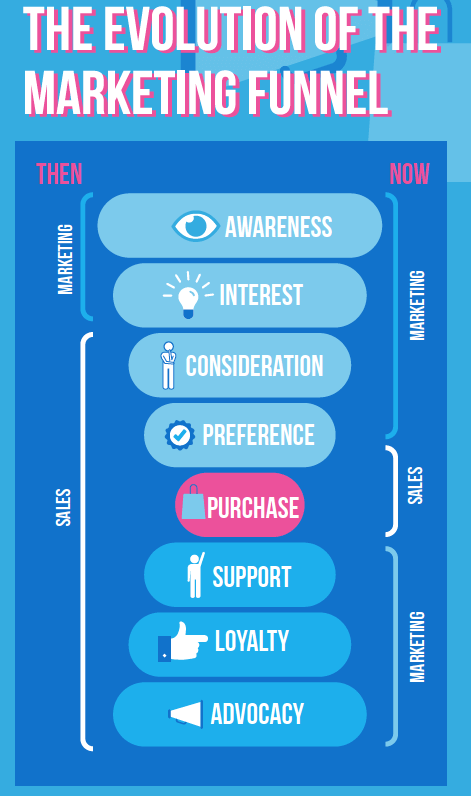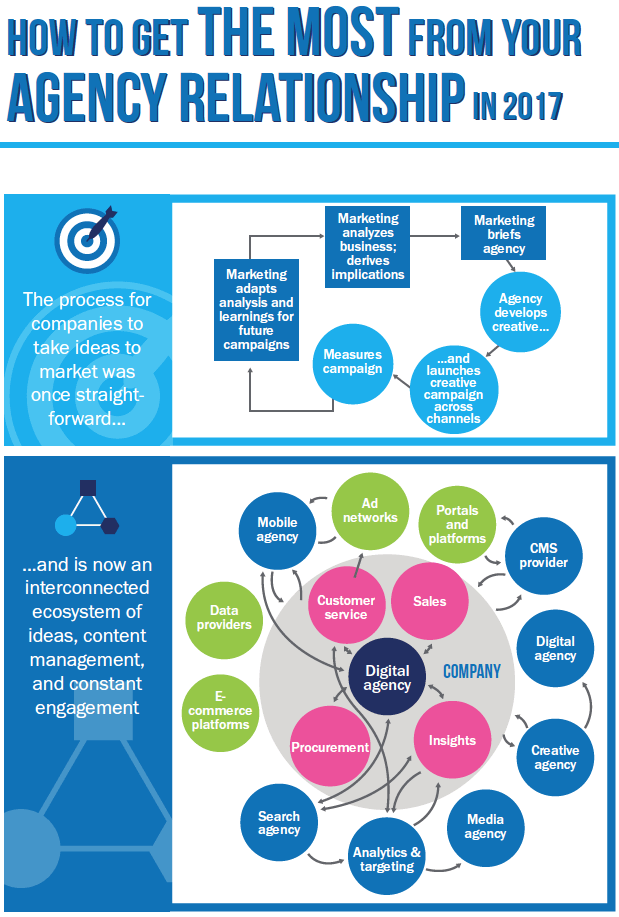As the landscape shifts, global marketers have to balance advancing unique organizational initiatives with the transformation of their entire sector. Many CMOs are spending more on technology than their Chief Information Officers (CIOs) or Chief Technology Officers (CTOs). In this new environment, what can a CMO do to stay ahead of the curve?

Global CMO by Greg Paull and Shufen Goh features insights from interviews with eighteen leading global CMOs responsible for bringing their brands into the future across drastically different markets. The brands represented in this book span several sectors, from CPG leaders such as Coca-Cola and Colgate-Palmolive; to financial giants like Mastercard, Bank of America, and Citi; to leading technology companies, including GE and Samsung. We caught up with Greg to discuss the book and the lessons we can all learn from these global marketing leaders. He’s the co-founder of R3, a globally minded independent marketing consulting firm. Since its founding, R3 has expanded to manage global relationships with Unilever, Samsung, Pfizer, Coca-Cola, Visa and Johnson & Johnson.
What is the job of the Global CMO?
The Global CMO’s role is a major challenge in the modern era – because they’ve got so many markets, so many cultures, and so many challenges and issues to deal with. It’s a never-ending role where the sun never sets. How do you serve a hundred countries effectively? We help Global CMOs create their playbook for building their marketing organizations, and now this book provides deep insights straight from the CMOs themselves. We explore how digital trends such as e-commerce, martech, adtech, big data, and shifting agency models are shaping CMOs’ global strategies, as well as how they are dealing with competition, disruption, and building a learning organization for the future.
What are the most common problems or rather, challenges, Global CMOs face?
No major surprise, but the major challenge is digital transformation. For a global CMO, digital transformation can be a challenge because, in addition to the rapid rate of digital transformation happening in the market, the rate of digital maturity across different markets varies and changes incredibly quickly. It is not enough for brands to get their name or message in front of audiences. They need to create an interactive, engaging, and memorable experience in order to be heard in a noisy, competitive environment.
There’s a great quote in the book from Mukul Deoras, the Chief Marketing Officer for the Colgate-Palmolive Company. He says that “the challenge is not the learning curve. The challenge is the un-learning curve.” So that’s a major challenge for CMOs today.
Today’s marketing department is about more than simply driving awareness via traditional marketing initiatives. It’s about driving a larger organizational shift, as well as fulfilling the customer’s purpose. The challenge is moving beyond the antiquated notion of attaining customers to do whatever fulfills the company’s purpose. Instead, it is about motivating the company to listen to and fulfill the customer’s purpose. In order to achieve this, CMOs need to form a partnership with CEOs to better understand the structure and drive of the business. Twenty years ago, marketing and advertising were focused on product awareness and brand affinity. But now that new technology allows companies to track a con-sumer across all touchpoints, marketing is as much about driving sales as it is about driving awareness.
I’m curious about Unilever? What makes them different?
Keith Weed, the Chief Marketing Officer of Unilever, has a very interesting perspective. He says that for the first 100 years we’ve been marketing at people; now we’re marketing with people – because we’re engaged in a two-way dialog, but in the future, we’re going to need to do marketing for people. Marketing’s going to have some utility and value for people, otherwise they’re going to block it and ignore it.
What were some surprises that came to light from these interviews? Any underlying themes?
One of the ideas we found interesting was reverse mentoring. Some companies now, like Coca Cola, Mastercard, and others, are experimenting – that’s where the 25 year-old comes in to the 45 year-old and teaches them about digital, Snapchat and Instagram and all of the other media they have to deal with. The best CMOs are embracing the youth from a learning perspective. This takes a little bit of humility.
Does the customer journey vary by country? Examples?
We’ve got a whole section in the book on China. Chinese consumers have taken e-commerce to new heights, integrating online purchasing into nearly every aspect of their digital journeys. Two specific types of e-commerce, mobile commerce (m-commerce) and social commerce (s-commerce), have steadily been on the rise in China. Making purchases via mobile apps is incredibly popular. For example, on Single’s Day (the Chinese equivalent of Black Friday) in 2016, 82 percent of Chinese consumers shop on their mobile phones. Several companies have told us that 30-40% of sales can take place on that day, so the journey is definitely different.
In Africa, we see the explosive growth of mobile – where mobile is becoming its own currency. Coca-Cola sees some of the mobile carriers as their competitors, because customers have a choice between spending their $5 dollars on a mobile card or a Coke. That’s a very broad competitive set.
Peter Nowlan of Four Seasons Hotels and Resorts points out that he views each Four Seasons Hotel around the world as its own mini-innovation lab to test and learn. He explains: “The advantage I have is more than 100 labs where we can try things and can see immediate results. We look at what’s happening in each region each month, and we talk about what worked and what didn’t work which helps inform our decision making going forward.”
How does the global CMO deal with the funnel?
Whereas the old funnel ended when a consumer made a purchase, in today’s world the marketing and sales funnel has expanded to include new post-purchase steps. The marketing function is now responsible for more of the consumer journey than ever before, and in order to keep up with these new responsibilities, there needs to be major changes to the way marketing teams are structured and how they fit into the wider organizational structure.

How do you develop and mange global vs. regional brands? How does brand cross-pollination work?
The challenge is to have that mindset that there are no local markets – only lead markets. You’ve got to have that mindset that whatever you create in any region can, if powerful enough, can resonate and go anywhere. A great idea can travel.
What role does technology play in global marketing?
It’s the biggest challenge – as I mentioned before. Based on a recent survey by the Altimeter Group, digital transformation and integration is largely led by the CMO, not the Chief Information Officer (CIO) or Chief Technology Officer (CTO), and it is well known that by 2018, the CMO’s technology expenditure will exceed the CIO’s.
Juliana Chugg, Executive Vice President and Chief Brand Officer of Mattel, tells us that “There’s a continuum of transformation underway and it varies by brand and geography. As we look at our digital quotient in the company, we have markets, such as China, that are the most advanced in terms of a digital-first mindset with digital consumer engagement central to our go-to market strategy.”
How does the Global CMO deal with agency relationships?
Some CMOs are finding that what was working on a global scale might not be translating locally, leading to not only an increased number of agency partners across disciplines, but across geographies as well.
In the Mad Men era of marketing, when a company wanted to take an idea to market, the process was pretty straightforward. The creative agency would develop an idea, develop a campaign, and launch that campaign across the traditional channels: TV, print, and out-of-home (OOH). In today’s digital landscape, that journey to get a message out to consumers has become increasingly complex and convoluted. Now, CMOs have to consider a wide range of digital touchpoints in addition to TV, radio, print, and OOH, and likely have a large number of agencies to coordinate in the process of developing and launching a campaign. The increased number of stakeholders also includes internal players that may not have been involved in marketing activities in the past, such as procurement, sales, data analytics, and customer service. In order to deliver a seamless consumer journey and unified brand message across the increased number of channels, CMOs have had to transform both the way they work with external partners and their organization’s internal processes in order to find the right agency model that works for their marketing and business objectives.

In the wake of digital transformation, how can CMOs become “future fit”?
Through the 18 CMOs we interviewed, we identify the eight ways that marketing leaders can prepare themselves:
- Never Stop Learning – Staying up-to-date from the newest platforms and channels, to the latest technology solutions
- Fight For Talent – Investing in finding digitally savvy talent – while also educating existing talent
- Become Customer Advocates –becoming the voice of the consumer within the organization.
- Adopt a Business Mindset – Marketing as a critical part of investor relations meetings, annual shareholder events.
- Form a New Approach to Partners – Managing a roster that includes both traditional agencies and new technology vendors.
- Measure It To Move It – Tying the marketing activities to the organization’s business objectives proving ROI
- Run Fast and Break (Some) Things – Willing to test and learn with new technologies and processes
- Remain a Storyteller – Remembering that storytelling lies at the heart of marketing, and that brand message shouldn’t be sacrificed on the altar of technology.
Source: themarketingjournal





